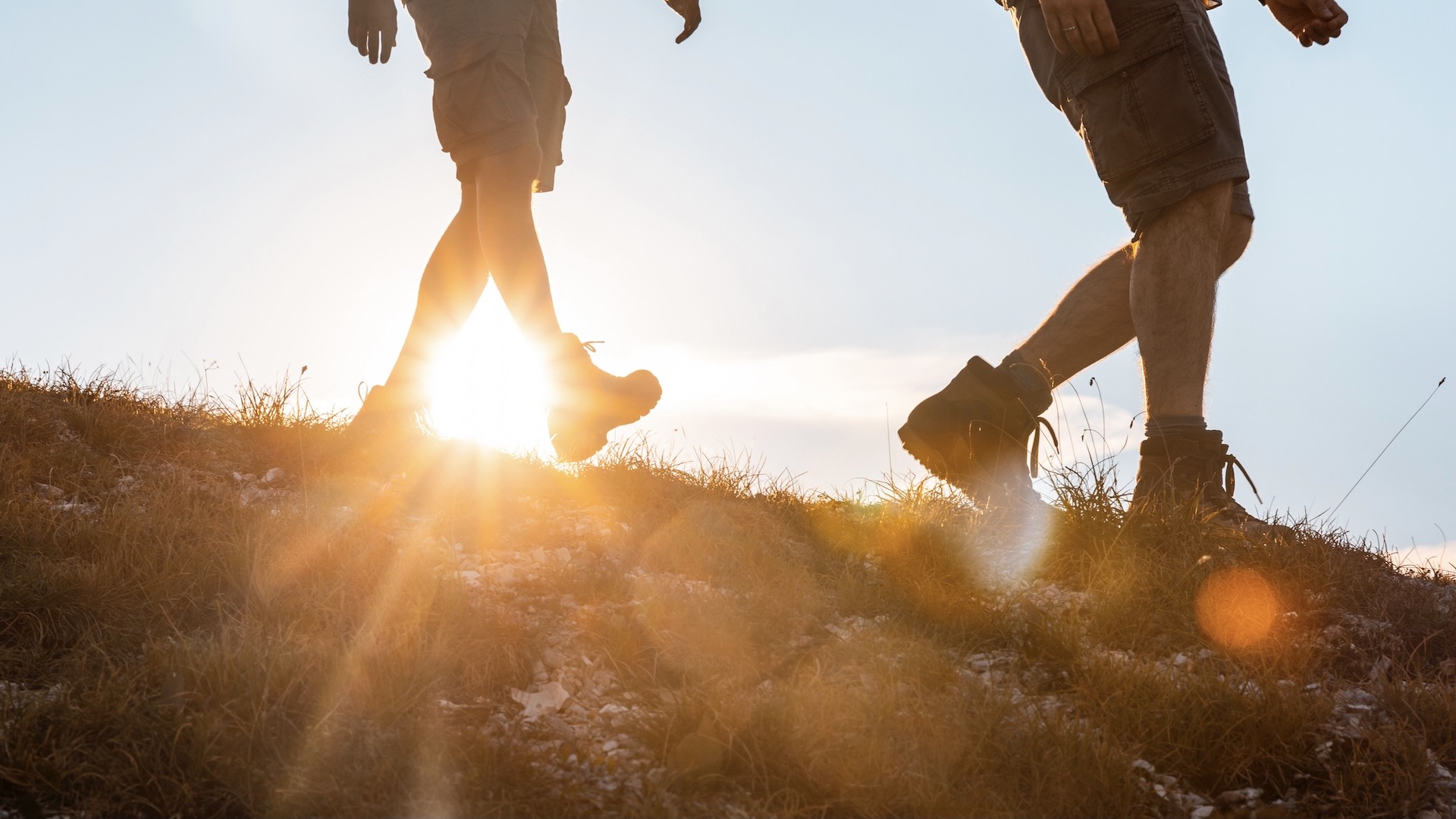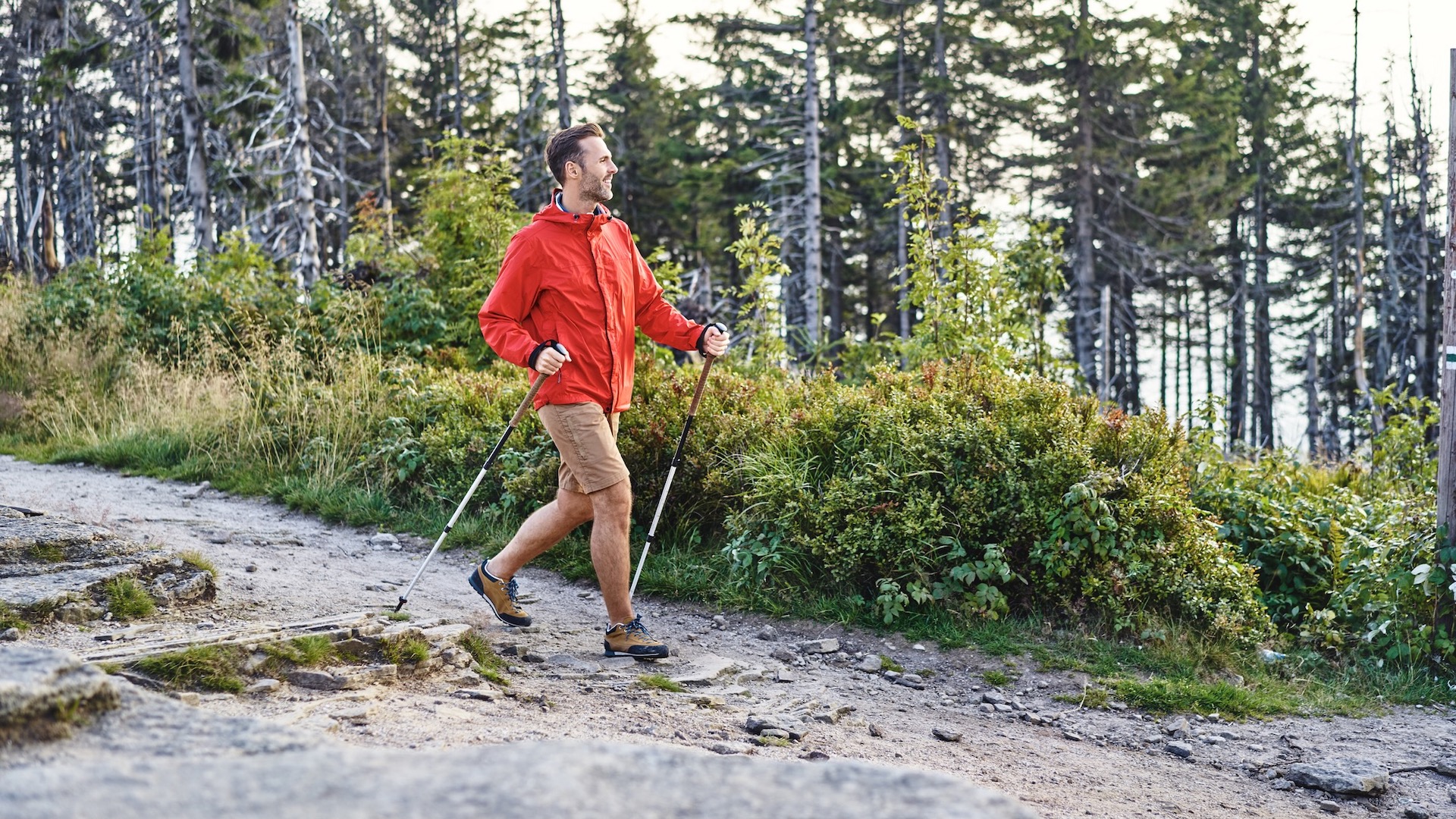How to avoid knee pain when hiking downhill
7 tips for avoiding and managing knee pain – and therefore enjoying a hill or mountain walk

Knee pain is a common complaint when walking in the hills and mountains, especially when hiking downhill. This issue can strike at any age but fortunately we have some tips for avoiding this pain and managing the problem if it strikes.
Build up to hiking
Starting any new activity without first building up slowly has the potential to lead to a range of injuries. The best way to strengthen muscles and tendons in preparation for walking, including hiking downhill, is to begin with shorter outings before gradually adding distance, as well as more ascent and descent. This allows the body to adapt to the exercise and is less likely to lead to pain and injuries.
Go slow
As well as a slower build up to hill hiking, it’s a good idea to aim to hike downhill at a slow and steady pace rather than trying to go too quickly. Once you have built up your strength and stamina, your knees will be able to take greater impact created by hiking downhill faster but to start with, slower is the best idea for pain-free hiking downhill.
Take smaller steps
It is better not to over-stride and over-flex muscles and tendons, which means you should aim to make your steps shorter when hiking downhill.
Adopt the right position
When hiking downhill it can be tempting to lean back, but this usually makes you unbalanced and therefore more prone to falling or taking a bad step.
The best method is to walk tall and in an upright position, keeping your torso over your hips and knees. It can even help to lean slightly forwards to improve stability. Also keep your knees a little bent to allow for easier hiking downhill.

Walk in zigzags
Instead of heading directly downhill, especially on steeper slopes, you should aim to walk in zigzags. Think of this as being similar to downhill skiing or doing switchbacks.
All the latest inspiration, tips and guides to help you plan your next Advnture!
By "zigzagging" or "switchbacking" you reduce the impact and stress on legs and knees because you will reduce the steepness by taking a shallower route downhill.
Use walking poles
Many walkers learn how to use trekking poles to help with relieving knee pain. The poles help to lessen the stress on leg muscles and joints because you can lean on them as you walk downhill. The poles also aid stability.
Wear high quality hiking boots
The best hiking boots are those that fit well and offer good support and grip. The firmer your foot is while hiking downhill the lower your chances of pain from unnecessary slipping
These tips should help with the avoidance and management of of knee pain while hiking downhill.

Fiona Russell is a widely published adventure journalist and blogger, better known as Fiona Outdoors. She is based in Scotland and is an all-round outdoors enthusiast with favorite activities including trail running, mountain walking, mountain biking, road cycling, triathlon and skiing (both downhill and backcountry). Aside from her own adventures, Fiona's biggest aim is to inspire others to enjoy getting outside and exploring, especially through her writing. She is also rarely seen without a running skort! Find out more at Fiona Outdoors.
